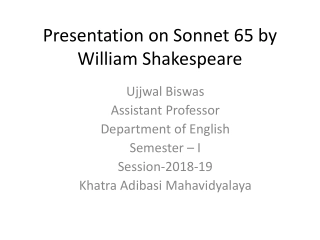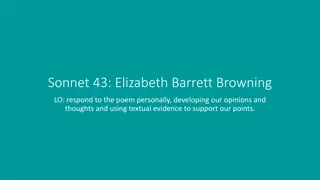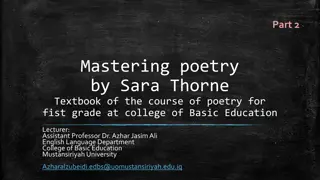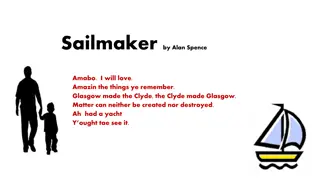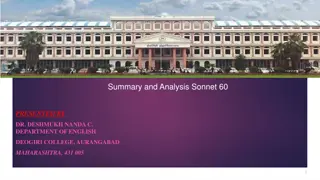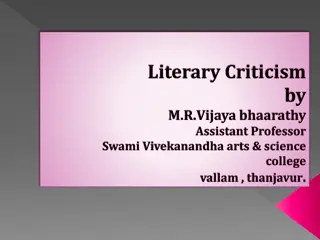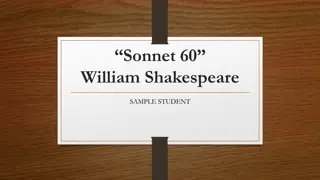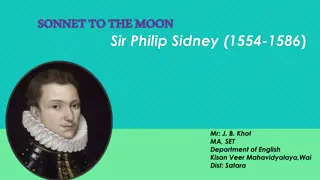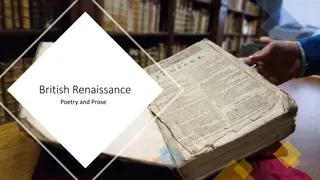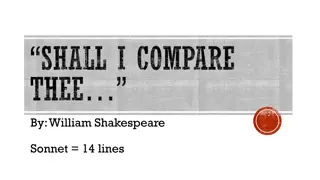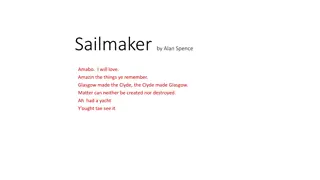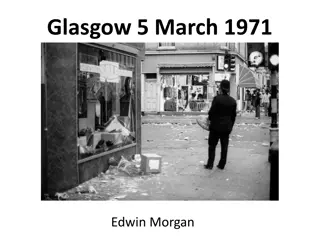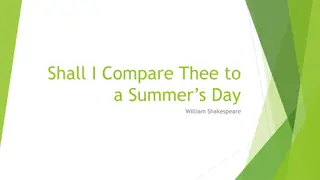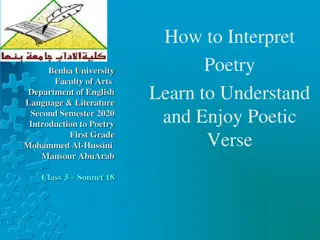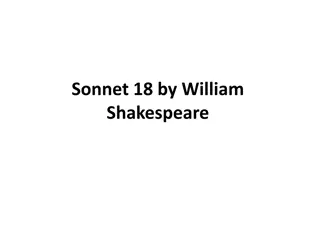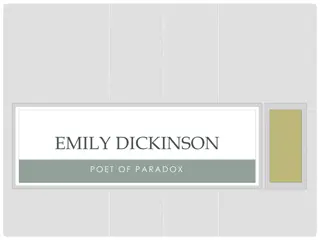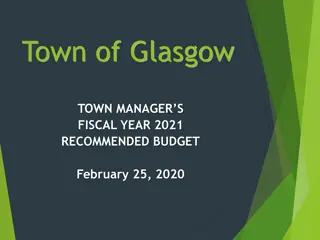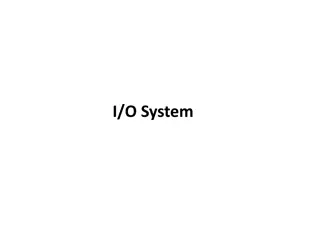Analysis of "Glasgow Sonnet i" with Annotated Themes and Literary Devices
"Glasgow Sonnet i" explores themes of decay, neglect, poverty, and social injustice in a tenement setting. The poem describes the external and internal aspects of the building, portraying a bleak picture of marginalized individuals living within it. Through vivid imagery and literary devices like personification, alliteration, and word choice, the poet evokes a sense of despair and hopelessness, highlighting the harsh realities faced by the residents.
Download Presentation

Please find below an Image/Link to download the presentation.
The content on the website is provided AS IS for your information and personal use only. It may not be sold, licensed, or shared on other websites without obtaining consent from the author.If you encounter any issues during the download, it is possible that the publisher has removed the file from their server.
You are allowed to download the files provided on this website for personal or commercial use, subject to the condition that they are used lawfully. All files are the property of their respective owners.
The content on the website is provided AS IS for your information and personal use only. It may not be sold, licensed, or shared on other websites without obtaining consent from the author.
E N D
Presentation Transcript
Glasgow Sonnet i Annotated version
Main ideas / themes Decay Neglect Poverty Social injustice First 5 lines: develop setting describe the tenement exterior Lines 6-8 introduce mother and daughter at window Lines 9-11 describe the inside of a tenement flat Lines 12-14 describe a sick unemployed man who has no motivation to get up
Form: Petrarchan sonnet Rhyme scheme: ABBA ABBA CD CD CD 14 lines Octet: introduces one idea (1st8 lines) Sestet: gives new perspective. Also called volta or turn. (last 6 lines) Usually about love Most English sonnets are in iambic pentameter, but this one is syllabic with 10 syllables per line
Wind personified as mean in this case poor / meagre rather than unkind Alliteration: wind is aimless Puddles personified as an angry animal (dog?) with the hair on its neck raised Discarded mattresses also personified: they sound hopeless / listless Assonance and alliteration A mean wind wanders through the backcourt trash. Hackles on puddles rise, old mattresses puff briefly and subside. Play- fortresses Playful rhyming and half rhymes: a sing-song effect that is at odds with the unpleasant subject matter this is a subversion of the sonnet, and poetry in general of brick and bric-a-brac spill out some ash. Four storeys have no windows left to smash,
Assonance: reinforces poets disgust at the building s dilapidation Word choice: a buttress usually holds something up / protects it. Ironic here, as the tenement is not much of a refuge Shocking: people live in this tenement! Ironic word choice: mistress suggests wealth and ownership Alliteration: a black block may remind us of the executioner s block. Word choice condemned reinforces this. Irony: the sentence passed on the tenement is that it cannot be knocked down! but in the fifth a chipped sill buttresses mother and daughter the last mistresses of that black block condemned to stand, not crash.
Alliteration: conveys the narrator s disgust Word choice: emotive language that makes the rats sound more like insects. Suggests infestation / disease Personification / word choice suggests the kettle is a suffering animal The hob is also personified Vivid visual imagery (metaphor): roses are usually positive, but in this case they are part of the decay Around them the cracks deepen, the rats crawl. The kettle whimpers on a crazy hob. Roses of mould grow from ceiling to wall.
Alliteration: sense of despair The man lies late since he has lost his job, Metaphor: suggests weakness even his coughs are feeble ones Word choice thinly suggests poverty / weakness Personification: like the wind at the beginning or the poem, the air itself is part of the decay and hopelessness. Hyperbole: the air is in reality no different, but it emphasises the point that the inhabitants of the block have been abandoned by society smokes on one elbow, letting his coughs fall thinly into an air too poor to rob.


